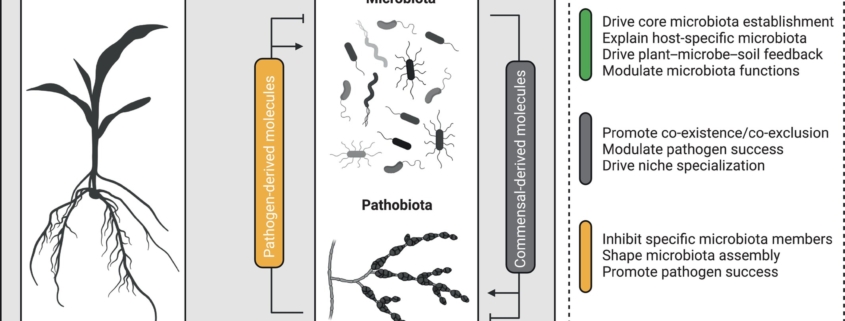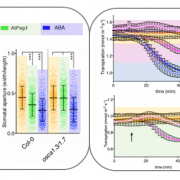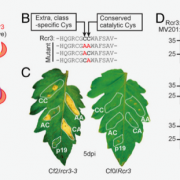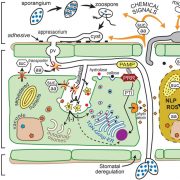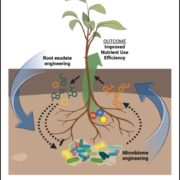Virtual issue: The chemical language of plant–microbe–microbe associations
 Don’t miss this exciting Virtual Issue from New Phytologist on “plant-microbe-microbe” interactions. That’s not a typo – many of the articles address the signals that coordinate such multi-factorial interactions, as there is a growing recognition that interrelations between microbes influence how they interaction with plants (see also the review below by Mesny et al.). This Virtual issue centers the role of chemical signals, including hormones, metabolites, peptides, and volatile organic compounds (VOCs), in shaping plant-microbe-microbe outcomes. The editorial beautifully summarizes this exciting topic and introduces some of the key questions still being addressed. One of the articles I found particularly intriguing is “Listening to plant’s Esperanto via root exudates.” Esperanto is a constructed international language that was developed to foster communication between people of diverse origins, and I love thinking of plant exudates as a universal language that can be understood by all microbes. I also enjoyed the article exploring how “Microbial terroir” affects the flavor chemistry of mustard seed. Terroir is a term commonly used in winemaking that refers to how the environment in which a plant is grown influences its chemical composition and flavor. The potential applications of a better understanding plant-microbe-microbe interactions are vast, from optimizing or customizing flavor, to harnessing beneficial microbes in order to suppress disease-causing microbes, and beyond. (Summary by Mary Williams @PlantTeaching) New Phytologist. Editorial 10.1111/nph.20124.
Don’t miss this exciting Virtual Issue from New Phytologist on “plant-microbe-microbe” interactions. That’s not a typo – many of the articles address the signals that coordinate such multi-factorial interactions, as there is a growing recognition that interrelations between microbes influence how they interaction with plants (see also the review below by Mesny et al.). This Virtual issue centers the role of chemical signals, including hormones, metabolites, peptides, and volatile organic compounds (VOCs), in shaping plant-microbe-microbe outcomes. The editorial beautifully summarizes this exciting topic and introduces some of the key questions still being addressed. One of the articles I found particularly intriguing is “Listening to plant’s Esperanto via root exudates.” Esperanto is a constructed international language that was developed to foster communication between people of diverse origins, and I love thinking of plant exudates as a universal language that can be understood by all microbes. I also enjoyed the article exploring how “Microbial terroir” affects the flavor chemistry of mustard seed. Terroir is a term commonly used in winemaking that refers to how the environment in which a plant is grown influences its chemical composition and flavor. The potential applications of a better understanding plant-microbe-microbe interactions are vast, from optimizing or customizing flavor, to harnessing beneficial microbes in order to suppress disease-causing microbes, and beyond. (Summary by Mary Williams @PlantTeaching) New Phytologist. Editorial 10.1111/nph.20124.


